What Are the Preparation Methods of Low Molecular Weight Hyaluronic Acid Powder?
Hyaluronic acid, also known as glass acid, is a glycosaminoglycan composed of alternating glucuronic acid (GlcUA) and N-acetylglucosamine (GlcNAc) units. Hyaluronic acid is a white powder that is odorless and tasteless. It is soluble in water but insoluble in organic solvents. Its relative molecular weight (Mr) ranges from 1 × 104 to 7 × 106. It has good viscoelasticity and pseudoplastic rheology, and is widely used in ophthalmic microsurgery, arthritis treatment, tissue engineering, surgical adhesion prevention and other fields [1]. Hyaluronic acid can be produced by tissue extraction and microbial fermentation. Hyaluronic acid from different sources does not differ in structure, but hyaluronic acid with different Mr values exhibits different or even opposite biological activities, with obvious Mr dependence.
Hyaluronic acid with a molecular weight of >2 × 106 is used in ophthalmic surgery and for the treatment of osteoarthritis due to its good viscoelastic properties; hyaluronic acid with a molecular weight of (1–2) × 106 is used in eye drops and cosmetics due to its good moisturizing properties; Mr. (1 to 8) × 104 low relative molecular weight hyaluronic acid (low molecular weight hyaluronic acid, low molecular weight hyaluronic acid) and Mr. <1 × 104 hyaluronic acid oligosaccharides have biological activities such as promoting angiogenesis and wound healing and anti-tumor [2]. The author reviews the latest research on the preparation methods and biological activities of low molecular weight hyaluronic acid.
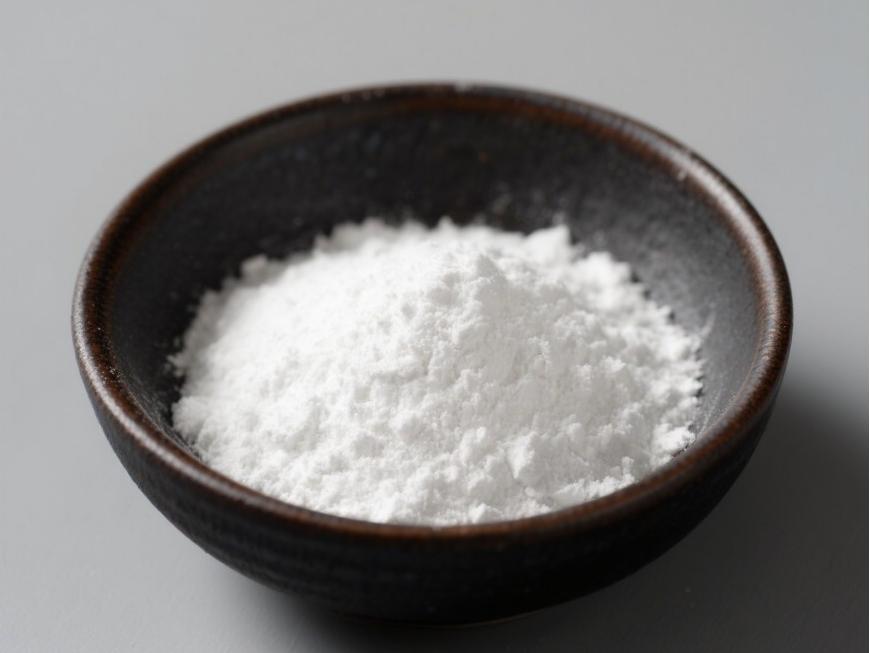
1 Preparation methods of low molecular weight hyaluronic acid
The molecular weight of hyaluronic acid produced by extraction and isolation from animal tissues or microbial fermentation is generally 2 × 105 to 7 × 106. However, there is currently no unified standard for the molecular weight of low molecular weight hyaluronic acid, and it is generally considered to be 1 × 104 to 5 × 105. Therefore, low molecular weight hyaluronic acid powder can be prepared by first degrading hyaluronic acid to a certain extent, and then purifying and refining it. There are many degradation methods, which can be divided into physical degradation methods, chemical degradation methods and biological degradation methods. In addition, low molecular weight hyaluronic acid can also be produced by microbial fermentation. Different degradation methods have their own advantages and disadvantages, and an appropriate degradation method can be selected according to actual needs.
1. 1 Physical degradation method
The physical degradation method uses physical factors to degrade hyaluronic acid, such as heat, mechanical shear, ultraviolet light, microwaves, ultrasound, gamma-ray irradiation, etc. Choi et al. [3] compared the degradation effects of electron beam irradiation (EB), gamma-ray irradiation (GM), microwave irradiation (MW) and heat treatment (TH) on the degradation of hyaluronic acid powder. The results showed that all four methods could degrade the Mr of hyaluronic acid from 1.04 × 106 to 2 × 105 to 3 × 105, but all of them affected the structure of the low molecular weight hyaluronic acid after degradation. Among them, the MW treatment method increases the UV absorption of low molecular weight hyaluronic acid at 265 nm, which causes double bonds in the molecular structure and changes the color of the product to brown. However, this method may increase the antioxidant activity of low molecular weight hyaluronic acid.
The EB and GM methods result in minimal changes to the UV spectrum of low molecular weight hyaluronic acid compared to other methods, indicating minimal changes to the molecular structure during degradation. However, the resulting products have low polydispersity (Mw/Mn of 2.21 and 2.27, respectively), The EB and GM methods of hyaluronic acid degradation are more random than the MW method. TH is a simple and easy-to-control method of hyaluronic acid degradation. Hyaluronic acid powder is placed in an oven at 90 °C for 52 h to obtain a product with a narrow Mr distribution range. The physical degradation method does not require chemical reagents, does not pollute the environment, has a simple post-processing procedure, and obtains a product with a narrow molecular weight distribution and good thermal stability. However, this method takes a long time to degrade, which is not conducive to mass production. In order to reduce production costs, the chemical degradation method is mostly used.
1. 2 Chemical degradation method
Some chemical reagents can be used to break hyaluronic acid chains, thereby achieving the purpose of degradation. Hydrochloric acid is commonly used for acid hydrolysis, sodium hydroxide for alkaline hydrolysis, and sodium hypochlorite and hydrogen peroxide for oxidative degradation. The main principle of oxidative degradation is that the oxygen radicals produced by the oxidant break the glycosidic bonds of the hyaluronic acid chains. The higher the concentration of H2 O2, the faster the degradation. The addition of CuCl2 can significantly increase the degradation rate [4]. In addition, it has been found that hyaluronic acid can be oxidatively degraded in Weissberger's system [ascorbate + Cu(II)], but the addition of some mercapto compounds such as D-penicillamine and reduced glutathione can inhibit hyaluronic acid degradation [5].
In addition to traditional chemical degradation methods, in recent years, Gu et al. [6] studied the electrochemical degradation of hyaluronic acid, that is, the use of Ti/TiO2-RuO2 electrodes to electrolyze hyaluronic acid solution (0.1% W/V), with uniform stirring during the electrolysis process and the temperature controlled at 50 °C. The results showed that the Mr of hyaluronic acid could be reduced from 1.49 × 106 to 6.9 × 104 within 120 min. FT-IR spectroscopy and 1H and 13C-NMR results showed that the chemical structure of hyaluronic acid was not significantly changed by the electrochemical method. Therefore, the electrochemical method is simple and feasible, with a short degradation time, and is a new method with application prospects. Using a chemical degradation method, the Mr of the product can be controlled by controlling the amount of chemical reagent added and the reaction time. The degradation time is short, which reduces production costs. However, the disadvantage is that the reaction conditions are relatively harsh, which not only destroys the glycosidic bond on the sugar chain, but may also destroy the structure of the monosaccharide residue. There may also be residues of the oxidant in the product, which reduces the quality of the product.
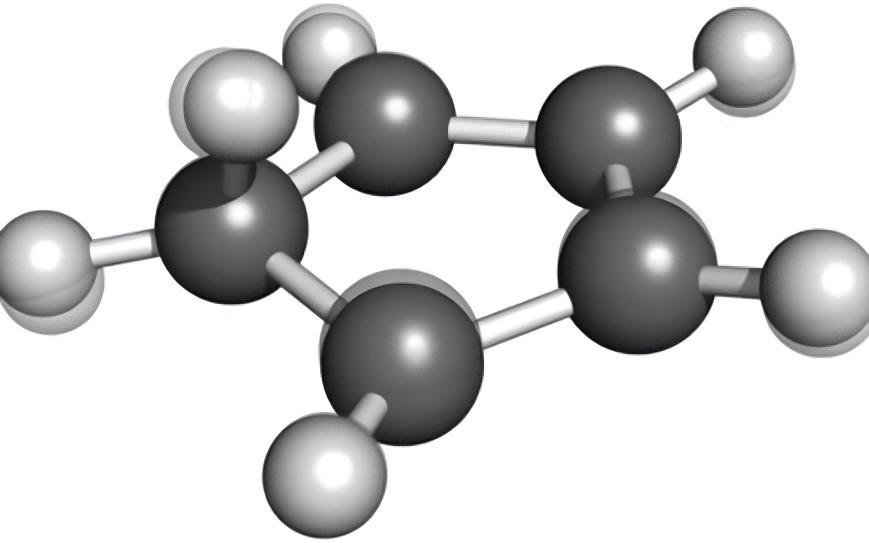
1. 3 Biodegradation method
Hyaluronic acid is degraded by the action of hyaluronidase (hyaluronidase, hyaluronic acid as), which breaks the glycosidic bond. In the past, hyaluronidase was mostly derived from animal testes. Annal- isa et al. [7] used bovine testicular hyaluronidase (BTH) to hydrolyze hyaluronic acid in vitro and found that BTH can significantly reduce the Mr of hyaluronic acid. The higher the enzyme concentration and the longer the time, the shorter the hyaluronic acid chain. The experimental results show that the Mr of hyaluronic acid can be as low as 1 × 104 after 24 h of enzymatic hydrolysis with BTH 10 U·mL-1. Cui Xiangzhen et al. [8] determined the optimal conditions for hyaluronidase-catalyzed hyaluronic acid hydrolysis, which were a substrate concentration of 10 g·L-1, an enzyme concentration of 150,000 U·L-1, a pH of 5.0, and a reaction temperature of 50 °C. Hyaluronic acid with different Mr can be obtained by controlling the reaction time. However, the method of obtaining hyaluronic acid as from animal testes is limited by the raw material and is relatively expensive. It has been found that certain Streptococcus bacteria can produce hyaluronic acid as.
Ei-safory et al. [9] summarized the types of bacteria that can produce hyaluronan as, including Streptococcus agalactiae, Streptococcus pyogenes, Streptococcus pneumonia, Streptococcus intermedium, Streptococcus consellatus, Streptococcus dysgalactiae, Streptococcus uberis, Streptococcus zooepidemicus. These streptococcal bacteria produce hyaluronidase that degrades hyaluronic acid by cleaving the N-acetylglucosamine bond and producing a △-4,5-aldonic acid residue at the undegraded end. In addition to hyaluronidase, glucuronidase and hexosaminidase also have the effect of degrading hyaluronic acid [10].
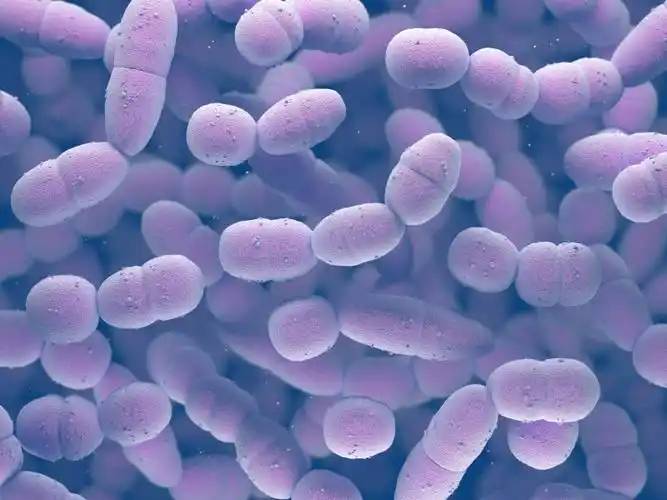
Enzymatic hydrolysis is the mildest degradation method, which has the least impact on the structure of hyaluronic acid and therefore its activity. It is used to prepare low molecular weight hyaluronic acid, and hyaluronic acid oligosaccharides can also be obtained after gel chromatography separation. However, the source of hyaluronic acid as is limited and expensive, which to a large extent restricts their application.
1. 4 Microbial fermentation
The above methods for preparing low-molecular-weight hyaluronic acid all use finished hyaluronic acid for further degradation, which is complicated and time-consuming, and some hyaluronic acid is also lost during the degradation process. In recent years, studies have shown that low-molecular-weight hyaluronic acid can be directly produced through fermentation culture, mainly by changing the strain, the composition of the culture medium, or adding a certain substance during the fermentation process. US patent [11] reports that recombinant Bacillus subtilis can produce 2 × 104 to 8 × 104 low molecular weight hyaluronic acid under culture conditions with a changed temperature. This method involves culturing at a temperature suitable for the growth of the strain for a period of time, and then increasing the temperature to achieve the purpose of producing low molecular weight hyaluronic acid.
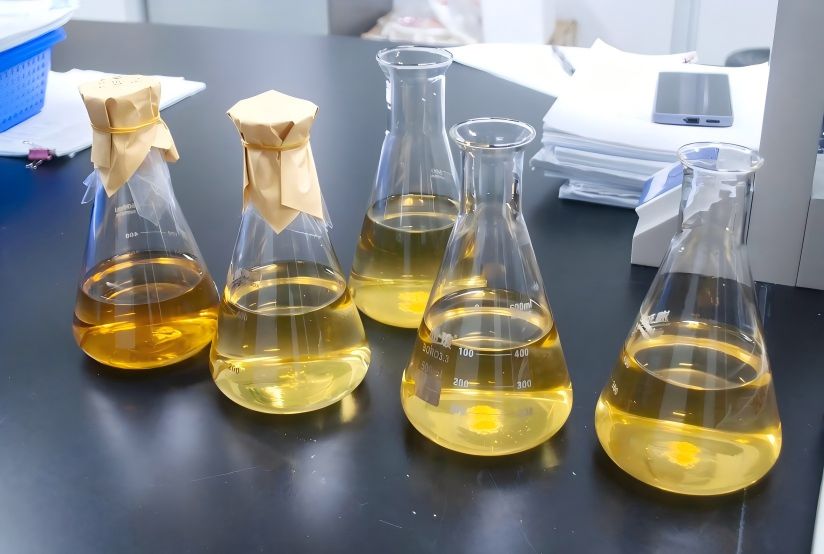
Pires et al. [12] modified the medium for Streptococcus zooepidemicus fermentation to produce hyaluronic acid. They used agricultural product derivatives such as soybean protein hydrolysate, concentrated whey protein, and cashew nut liquid as the medium, and a synthetic medium with glucose as the carbon source and yeast extract as the nitrogen source as a control. The medium was incubated in a shaking bottle at 37 °C and 150 r · min-1 for 24 h. The results showed that the average Mr of hyaluronic acid produced by all agricultural products as culture medium was between 103 and 104, among which the Mr of low molecular weight hyaluronic acid produced by cashew liquid medium is about 2 × 104.
Liu et al. [13] added hydrogen peroxide (1.0 mmol·g-1 hyaluronic acid) and ascorbate (0.5 mmol·g-1 hyaluronic acid) to the fermentation broth of Streptococcus zooepidemicus at 8 and 12 h of fermentation, and used oxidative degradation to obtain the final product of hyaluronic acid with a Mr of 8 × 104. acid) at 8 and 12 h. The final product of hyaluronic acid has a Mr of 8 × 104, and the added substances have no effect on the growth of Streptococcus zooepidemicus. Using the degradation of the added substance, a certain amount of hyaluronic acid as was added during the fermentation process, and the same LM-W hyaluronic acid was obtained. Liu et al. [14] added hyaluronic acid as to the fermentation broth at different concentrations during the 8 h fermentation. At the mass concentrations of 0.15, 0.20 and 0.25 g·L-1, the Mr of hyaluronic acid was reduced to 4.5 × 104, 3.2 × 104 and 2.1 × 104, respectively.
Microbial fermentation is a common method for producing hyaluronic acid powder, and the direct production of low molecular weight hyaluronic acid by changing the fermentation conditions can eliminate the need for subsequent degradation processes. If the fermentation conditions are further optimized, the fermentation conditions can be adjusted according to actual needs to directly produce hyaluronic acid with different Mr, reducing production costs and having high application value for large-scale production of LM-W hyaluronic acid.
2 Biological activity of low molecular weight hyaluronic acid powder
Studies have shown that the biological activity of hyaluronic acid powder is significantly dependent on molecular weight. This article focuses on the anti-tumor, pro-inflammatory response and immune regulation biological activities of low molecular weight hyaluronic acid.
2. 1 Anti-tumor effect
Alaniz et al. [15] showed that low molecular weight hyaluronic acid reduced the growth of colorectal carcinoma (CRC) cells in vivo and in vitro. The results of in vitro experiments showed that low-dose low molecular weight hyaluronic acid (20 μg·mL-1) was the only condition that significantly reduced the proliferation of CT26 tumor cells. This effect was mediated by the CD44 receptor and the use of low molecular weight hyaluronic acid (1 to 3) × 105 groups significantly increased CT26 cell apoptosis (about 50%) compared to the use of high Mr hyaluronic acid (1.5 to 1.8) × 106 groups; in vivo experiments showed that low molecular weight hyaluronic acid can reduce the growth of CRC tumor cells and increase the survival rate of tumor-bearing mice. The authors speculate that the mechanism is to exert an anti-tumor effect by increasing antigen presentation by dendritic cells (DCs). Teng et al. [16] believe that hyaluronic acid can regulate the growth and differentiation of CRC cells by inhibiting the apoptosis mechanism in conjunction with hyaluronan syntase 3 (hyaluronan syntase 3, hyaluronan S 3). The mechanism of action of low molecular weight hyaluronic acid in anti-tumor is still inconclusive, which may be related to its Mr, concentration and reaction with other matrix components in the tumor microenvironment.
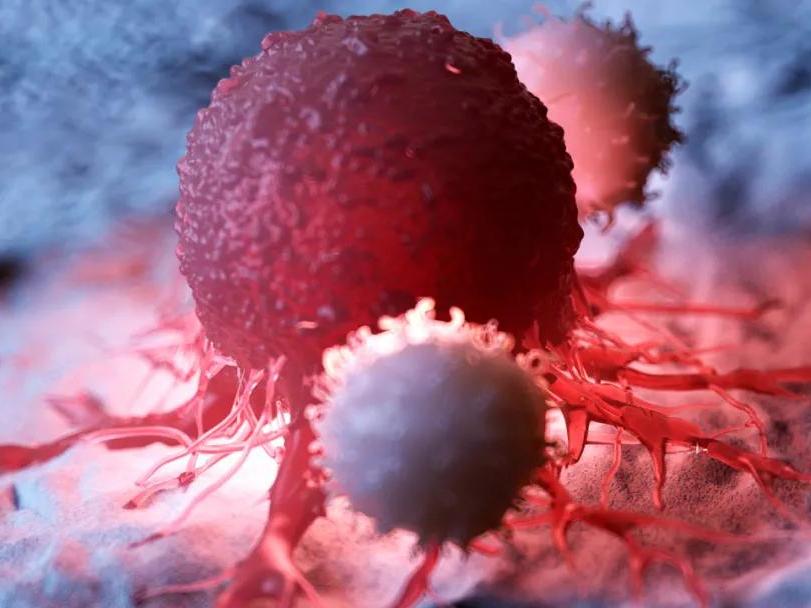
2.2 Promoting inflammatory response
There are many research results on the relationship between low molecular weight hyaluronic acid and inflammation. As early as 1996, Mckee et al. [17] found that low molecular weight hyaluronic acid can induce macrophages to express mononuclear cells chemical attract protein-1 (MCP-1), macrop hyaluronic acidge inflammatory protein-1α (MIP-1α), macrop hyaluronic acidge in- flammatory protein-1β (MIP-1β) and other chemokines, thereby causing inflammation. Voel MIP-1α), and macrophage inflammatory protein 1β (macrophage inflammatory protein-1β, MIP-1β), etc., which cause inflammation. Voelcker et al. [18] believe that hyaluronic acid fragments can be considered Toll-like receptors (TLR) and cause an inflammatory response.
Farwick et al. [19] used a reconstructed human epidermis model and found that 2 × 104 hyaluronic acid could significantly upregulate the expression of tumor necrosis factor (TNF-α) in this model, indicating an inflammatory response. However, 5 × 104 hyaluronic acid did not significantly change the expression of TNF-α and did not show an inflammatory response. Lyle et al. [20] investigated the effect of hyaluronic acid with different Mr on nitric oxide production in the mouse cell RAW264. 7 under inflammatory or non-inflammatory conditions (nitric oxide is a direct indicator of the macrophage-mediated inflammatory response). Under the highest inflammatory conditions, low molecular weight hyaluronic acid slightly increased its production, indicating that if the endotoxin is reduced to an extremely low level, low molecular weight hyaluronic acid does not directly induce macrophage-mediated inflammatory responses in normal tissues.
2.3 Immune regulation
Domestic and foreign studies have confirmed that hyaluronic acid is involved in the regulation of the human immune system. Low concentrations of hyaluronic acid have a slight stimulating effect on phagocytes and natural killer cells, but inhibit the transformation of lymphocytes and the formation of rosettes of red blood cells. At the same time, high concentrations of hyaluronic acid have a significant inhibitory effect on lymphocytes, phagocytes, natural killer cells, etc. [21]. Alaniz et al. [22] found that low molecular weight hyaluronic acid can promote the maturation of DCs, increase the production of IL-12, and reduce the production of IL-10, while also producing a specific cytotoxic T lymphocyte response and immune protection response. and dendritic cells/T lymphocytes (DC/TL) pretreated with low-molecular-weight hyaluronic acid have improved migratory capacity towards chemokine ligand-19 (CCL-19) and chemokine ligand-21 (CCL-21), and these migratory capacities enhance the aggregation of DC/TL cells in lymph nodes.
2. 4 Other
low molecular weight hyaluronic acid has a variety of other biological activities. Pilloni et al. [23] found that in vitro experiments showed that low molecular weight hyaluronic acid can promote the migration and differentiation of mesenchymal cells, thereby promoting bone formation. Gariboldi et al. [24] found that in the case of skin damage, low molecular weight hyaluronic acid can stimulate keratinocytes to increase the production of β-defensin 2, which increases skin healing function. which may be due to the increased antibacterial activity of the skin caused by the increased production of beta-defensin 2.
3 Prospects
The preparation of low-molecular-weight hyaluronic acid powder is a prerequisite for research and application. At present, the methods used for large-scale production are mostly chemical degradation methods, which have a great impact on the structure of the obtained product. In contrast, the biodegradation method has mild reaction conditions and a simple process, and is a degradation method that produces the best low-molecular-weight hyaluronic acid structure. At the same time, the microbial fermentation method for producing LM-W hyaluronic acid is a new method with industrial development value, but this method is still some way from large-scale production. Therefore, further exploration and research is still needed for each method.
Low molecular weight hyaluronic acid powder has a variety of biological activities, and biological agents can be developed and prepared based on these activities. For example, the anti-tumor effect is expected to be developed into an adjuvant for tumor treatment. In addition, its immunomodulatory effect can also play a role in the preparation of immune adjuvants. There are many other biological activities of low molecular weight hyaluronic acid, but there is still no systematic pharmacological research or clinical trials. These are all unresolved issues for low molecular weight hyaluronic acid, and more in-depth research is needed.
Refeference
[1]CUI Y,DUAN Q,LI Y H.The research progress in hyaluronic acid[J].J Changchun Univ Sci Technol, 2011,34(3) : 101-106.
[2]YANG G L,GUO X P,LUAN Y H.Applications of sodium hya- luronate with different relative molecular mass[J ], Food and Drug,2005,7 ( 12) : 1-3.
[3]CHOI J ,KIM J K ,KIM J H,et al.Degradation of hyaluronic acid powder by electron beam irradiation,gamma ray irradiation, microwave irradiation and thermal treatment : A comparative study [J].Carbohydr Polym,2010,79(4) : 1080-1085.
[4]LADISLAV S ,VLASTA B ,MONIKA S ,et al. Degradation of high-molecular-weight hyaluronan by hydrogen peroxide in the presence of cupric ions[J].Carbohydr Res,2006,341 (5) : 639- 644.
[5]HRABROV E,VALACHOV K ,RYCHLY J,et al.High- molar-mass hyaluronan degradation by Weissberger's system : Pro- and anti-oxidative effects of some thiol compounds[J]. Polym Degra Stab,2009,94( 10) : 1867-1875.
[6]GU Z M,CAI Q Y,HE Y,et al.Degradation of hyaluronan by an electrochemical process[J]. Carbohydr Polym ,2010 ,82 : 521-523.
[7]ANNALISA L G,MARIO D R,IOLANDA M,et al.A complete hyaluronan hydrodynamic characterization using a size exclusion chromatography-triple detector array system during in vitro enzymatic degradation[J].AnaL Biochem,2010,404( 1) : 21-29.
[8]CUI X Z,LIU A H,WANG F S,et al. Reaction conditions of hyaluronic aicd hydrolysis catalyzed by hyaluronidase[J].Chin J Biochem Pharm,2007,28 (3) : 161-163.
[9]EI-SAFORY N S,LEE G C,LEE C K.Characterization of hya- luronate lyase from Steptococcus pyogenes bacteriophage H4489A [J].Carbohydr Polym,2011,84(3) : 1182-1191.
[10]FRASER J R E,LAURENT T C,LAURENT U B .Hyaluronan : its nature,distribution,functions and turnover[J].Intern Med, 1997,242( 1) : 27-33.
[11]STOCKS S M ,BROWN S.Production of low molecular weight hyaluronic acid : US,WO /2007 /093179[P].2007-8-23.
[12]PIRES A M B,MACEDO A C,EGUCHI S Y,et al. Microbial production of hyaluronic acid from agricultural resource derivatives [J].Biores Technol,2010,101 ( 16) : 6506-6509.
[13]LIU L,DU G C,CHEN J,et al.Microbial production of low mo- lecular weight hyaluronic acid by adding hydrogen peroxide and ascorbate in batch culture of Streptococcus zooepidemicus[J].Biores Technol,2009,100( 1) : 362-367.
[14]LIU L,DU G C,CHEN J,et al.Influence of hyaluronidase ad- dition on the production of hyaluronic acid by batch culture of Streptococcus zooepidemicus[J]. Food Chem ,2008 ,110 (4 ) : 923-926.
[15]ALANIZ L ,RIZZO M ,MALVICINI M ,et al.Low molecular weight hyaluronan inhibits colorectal carcinoma growth by decrea- sing tumor cell proliferation and stimulating immune response[J]. Cancer Lett,2009,278 ( 1) : 9-16.
[16]TENG B P,HEFFLER M D,LAI E C,et al.Inhibition of hyalu- ronan synthase-3 decrease subcutaneous colon cancer growth by increasing apoptosis[J].Anti-Cancer Agent Med Chem,2011,11 (7) : 620-628.
[17]MCKEE C M,PENNO M B ,COWMAN M,et al.Hyaluronan ( HA) fragments induce chemokine gene expression in alveolar macrophages.The role of HA size and CD44[J].J Clin Invest, 1996,98 ( 10) : 2403-2413.
[18]VOELCKER V,GEBHARDT C,AVERBECK M,et al.Hyalu- ronan fragments induce cytokine and metalloprotease upregulation in human melanoma cells in part by signalling via TLR4[J].Exp Dermatol,2008,17 (2) : 100-107.
[19]FARWICK M,GAUGLITZ G,PAVICIC T,et al.Fifty-kDa hy- aluronic acid upregulates some epidermal genes without changing TNF-alpha expression in reconstituted epidermis[J].Skin Phar- macol Physiol,2011,24(4) : 210-217.
[20]LYLE D B,BREGER J C ,BAEVA L F,et al. Low molecular weight hyaluronic acid effects on murine macrophage nitric oxide production[J].J Biomed Mater Res A,2010,94(3) : 893-904.
[21]KE C L,ZENG X X.Research progress on the bioactivities of hy- aluronic acid[J].Chin Med Biothchnol, 2009,4(2) : 148-151.
[22]ALANIZ L ,RIZZO M ,GARCIA M G ,et al. Low molecular weight hyaluronan preconditioning of tumor-pulsed dendritic cells increases their migratory ability and induces immunity against murine colorectal carcinoma [J].Cancer Immunol Immunother, 2011,60( 10) : 1383-1395.
[23]PILLONI A,BERBARD G W.Low molecular weight hyaluronic acid increase osteogenesis in vitro[J].J Dent Res ,1992,71 : 574.
[24]GARIBOLDI S,PALAZZO M,ZANOBBIO L,et al.Low molec- ular weight hyaluronic acid increases the self-defense of skin epi- thelium by induction of β-defensin 2 via TLR2 and TLR4[J].J Immunol,2008,181 (3) : 2103-2110.


 English
English French
French Spanish
Spanish Russian
Russian Korean
Korean Japanese
Japanese





